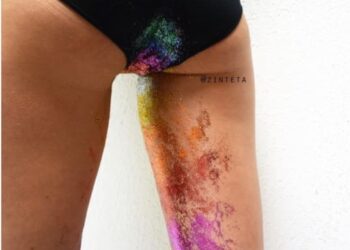Stretch marks are never fun to look at. They often look like you’ve been mauled by a lion and anything that doesn’t look natural on our skin is immediately considered a flaw. Stretch marks occur during sudden changes in body size, and this often happens during pregnancy, puberty, and weight gain. 90% of pregnant women have stretch marks around the abdomen, hips and thigh area, and it appears that it may actually genetic too. Doctors report that if your mom had stretch marks, odds are that you will too.
How Do Stretch Marks Form?
Stretch marks are often caused by hormonal changes during puberty, where your body undergoes a spurt of growth that is faster on the inside than it is on the inside. This results in the collagen and elastin fibres in the middle of your skin to stretch and tear, forming a scar tissue. They can sometimes appear purplish or red.
Where Do They Appear?
Stretch marks often appear in places where there more amounts of fats stored in your body, like your stomach, hips, thighs breasts and buttocks.
How Do I Get Rid of Stretch Marks?
The most important step to treating stretch marks is to start moisturizing your skin as early as possible. During the early stages, moisturize affected areas at least two to three times a day. The skin is better able to stretch when it’s more hydrated. In the early stages, stretch marks will appear reddish or purple, but when it becomes white or silver, they are way more difficult to treat.
Not all products can actually work to repair stretch marks, but among some of the important ingredients that do help includes wheat germ oil. Sadly, not much scientific data is able to back just how effective it is, but a study showed that it did improve stretch marks in the early stages.
Increasing your intake of Vitamin C through supplements (500 mg, three times a day) can reduce the appearance of stretch marks since it can increase collagen production in your skin. Cocoa Butter can also do the same due to its high moisturizing capacity, but it’ll only reduce the appearance of stretch marks.
Unless if you have a lot of money to spare, laser skin treatment may do some good as it promotes new and healthy collagen that will help repair the skin. Sadly, it can be painful and you may encounter some skin irritation if it’s not treated right.






